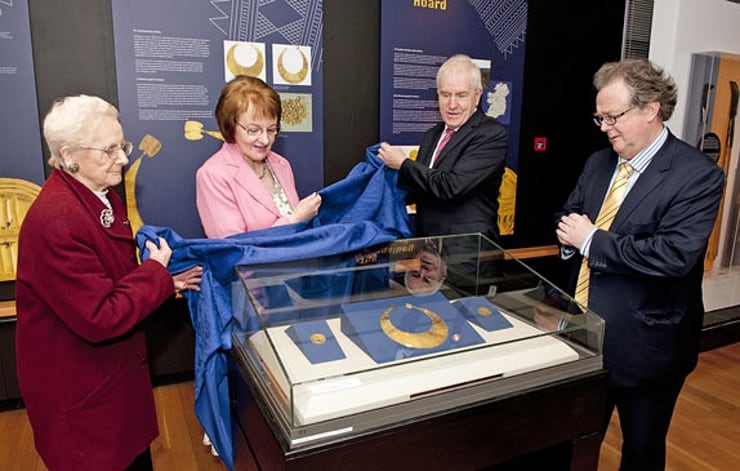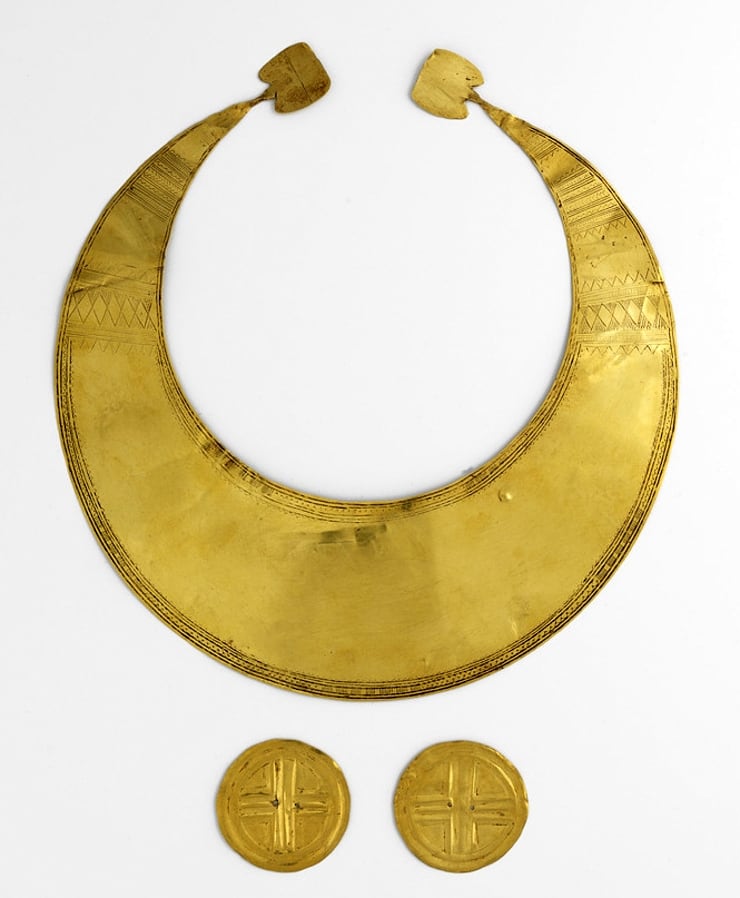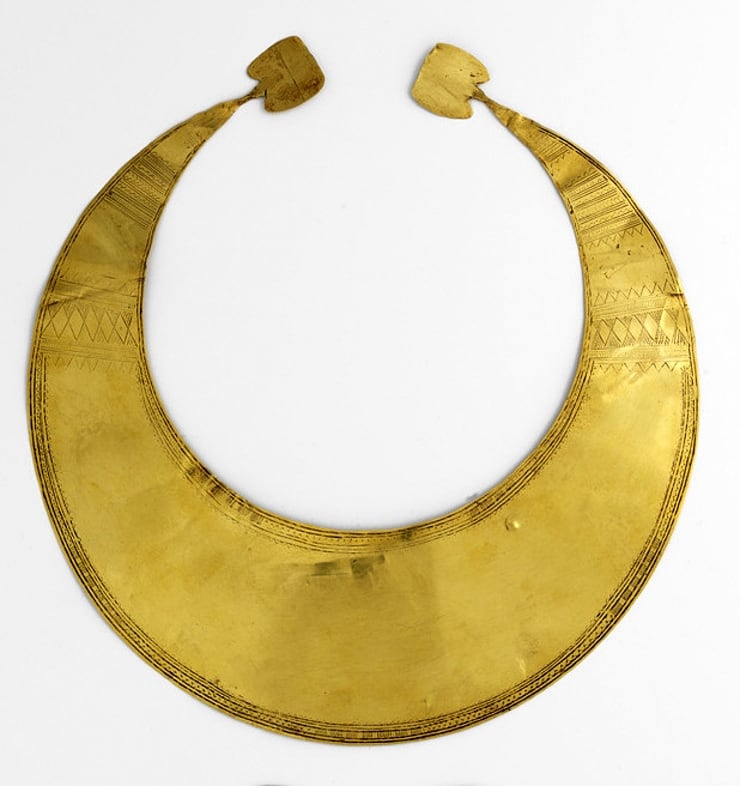Pěkný kousky zlata 👍 ale tipl bych že se ta osoba v té bažině možná utopila... Ale zas mi nejde do hlavy jak mohl na bažině sekat trávu... 🤔
7.4.1945 Coggalbeg's treasure
Categories: Calendar , Nálezy nejenom s detektorem ve Velké Británii a Irsku
A beautiful gold jewel and two gold wheels were discovered in 1945 by an Irish farmer in a bog. The treasure remained hidden until 2009, when the treasure vault was robbed by thieves. Fortunately, the precious artifacts were recovered.
This story begins in the spring of 1945. Roscommon farmer Hubert Lannon was mowing the lawn on his land in the west of Ireland when he was struck by a flash of gold. He bent down to see what it was. He discovered a golden lunula (a crescent-shaped pendant worn by girls in ancient Rome. Girls ideally wore them as an apotropaic amulet, the equivalent of a boy's bull) and two golden circles.
There was a treasure hidden in the swamp for 4,000 years. Hubert picked up the precious objects and took them home to safety. The largest object discovered in the depot was the aforementioned beautiful golden lunula. This beautifully crafted piece of jewelry was shaped like a crescent moon. It was flat and thin, made of hammered gold. It is an object of great prestige, probably originally worn around the neck.
The Roscommon lunula was found on the site with two gold wheels, which were made similarly to the jewel. The gold wheels are decorated with a cross motif surrounded by a double circle. This was the first time a lunula was found with two gold wheels. The distinctive shapes of these objects have led some experts to believe that they symbolize the moon and the sun.
Why the artifacts were buried together in the swamp remains uncertain, but it is possible that they represented an offering to some prehistoric deity. This deposition of precious objects in bogs and similar sites is characteristic of much of Irish prehistory.
In 1947, for reasons still uncertain, Hubert Lannon gave the gold objects to Patrick Sheenan, a pharmacist in Strokestown. Neither man seems to have fully appreciated the value of the artefacts and no one informed the National Museum of Ireland of the existence of the hoard. Instead, Sheenan placed the artifacts in his family safe, where they were hidden for the next fifty years, only occasionally showing them to curious visitors.
The treasure was hidden in the vault until one fateful night in 2009. Under cover of darkness, two Dublin men broke into the pharmacy on March 27. Searching for drugs and money, they soon uncovered the safe and dragged it to their car. Fortunately, the treasure was recovered. It was recovered by the National Museum of Ireland, which cleaned and catalogued the items.
Source: http://irisharchaeology.ie/



The article is included in categories:






